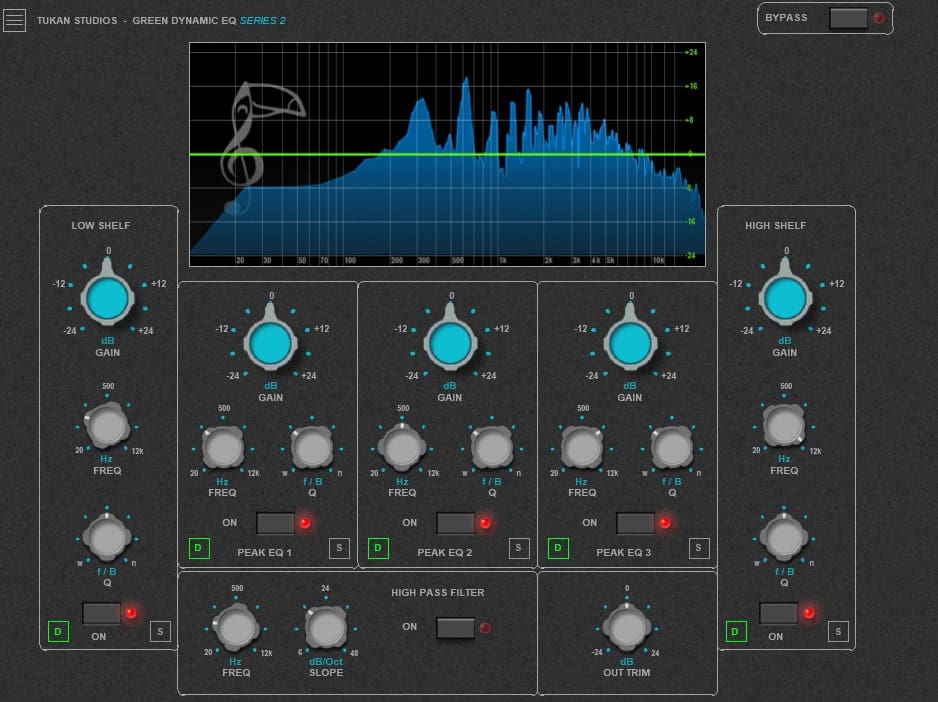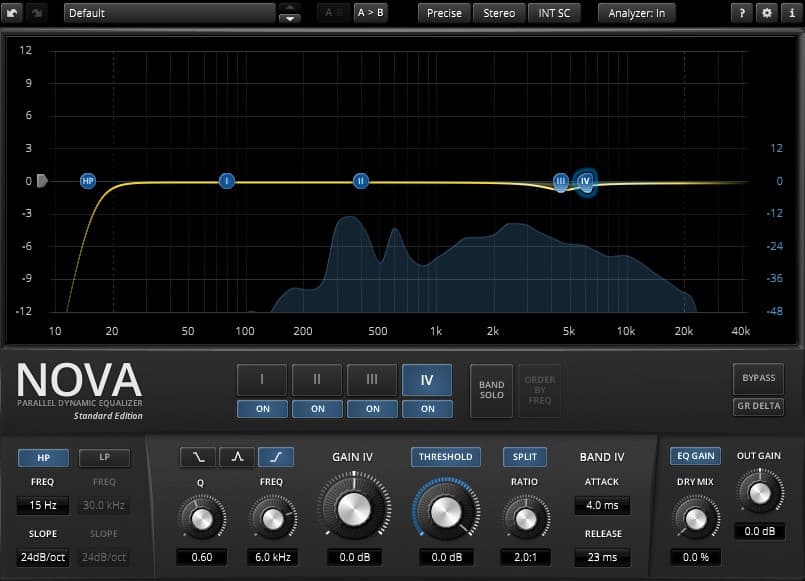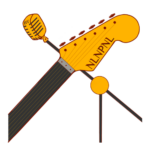Dynamic EQ Definition
A dynamic equalizer is a combination of an EQ and a compressor. With it, you can compress audio in a frequency-dependent way. A dynamic EQ can take a frequency band, give it a threshold, and compress that area of frequencies when they go over a threshold.
Why Use Dynamic EQ?
Every genre of music I can think of sounds best when all the audible frequencies are present in proportion. Some frequencies result in clarity, some in sizzle, some in warmth and some in a thicker, beefier sound.
But if warmth is out of proportion to the plus side, you just get muddiness. If the frequencies that represent clarity are too loud, you'll get harshness. It's all about proportion.
We use dynamic EQ as a tool to get us a smoother and more consistent frequency response.

Tukan Studios Green Dynamic EQ
Dynamic EQ -- When To Use It
Dynamic EQ is useful whenever there are problem frequencies, but they're inconsistent.
How Is A Dynamic Equalizer Different Than A Multiband Compressor?
Dynamic EQs and multiband compressors have very similar functions. They both compress in a frequency-dependent way. The main difference is the look. A dynamic EQ tends to look more like an EQ. Multiband compressors tend tend to look like compressors.

TDR Nova Dynamic EQ
Notice how the TDR Nova Dynamic EQ from Tokyo Dawn Labs, looks like an EQ? You can drag frequencies and bands around just like many EQs. However, in the knob section, you can also find threshold, attack, release and ratio controls, like a compressor.
How To Use A Dynamic EQ
- 1Solo up a band and look for the problem frequency area.
- 2Set the threshold so that the louder parts in that area trigger the threshold, but the quieter parts don't.
- 3Adjust the ratio, attack and release time to your taste.
- 4If it's frequencies sticking out when you don't want them to, you might leave the output level alone. If it's missing frequencies you want to boost, boost the output gain, or makeup gain up to where the louder parts ride nicely, and check that the quieter parts are good.
- 5Listen in the context of the mix, and adjust.
Dynamic EQ Conclusion
Dynamic EQ is one way to help ensure that your audio productions are smooth, frequency-wise and tickle the listener's ears in all the right places.
Resources
Rea (Reaper) Plugins: ReaEQ, ReaComp, ReaXcomp, ReaDelay, ReaFIR and others come with Reaper. If you don’t have Reaper, you can download the VST versions of ReaEQ, and these other useful plugins here. If you want to follow along with my tutorials, it will be good to have these. VST/VST3 versions available for separate download (Windows & Mac).
TDR Nova: Dynamic EQ. The version I used here, is free. A paid version with more features, is available.
Tukan Studios Plug-ins from John Matthews feature lots of great emulations and original plugins. They are Reaper-only.
Enjoy
Keith
